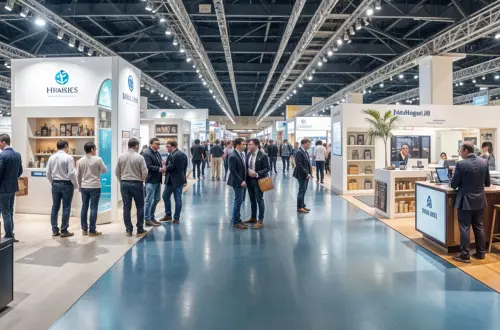How to Deal with Negative Trade Show Attendees
In the repertoire of any exhibitor should be a healthy skillset to deal with negative customers who may make a scene at your exhibition booth. Chances are little for this happening as most often the reason exhibitors attend these events is to meet with new prospects, but you have to be prepared. Trade shows often generate stress and people often have little patience with slow service, problems with products and giveaway items, or inadequate service at the booth. Although rarer for a B2B event, it’s not uncommon to maybe deal with negative feedback during a B2C exhibition, where you meet with the end consumer.
Not many exhibitors know how to handle such situations and that’s why we’re here! You need to follow a few practical rules and you should be all set:
Have the Right Attitude
It’s most important to be calm in situations like this. Many exhibitors feel the need to be defensive and might even get in arguments with customers, but you have resist such temptations. First, you need to be calm before all else! Understand that this isn’t personal but about the client’s experience and they’re valid in their feelings. You need to appear willing to help them with their problem so calmness, humility and curiosity are important. These interactions are valuable data mines.
Step into Their Shoes
Once you have the right mindset, you need to embrace the person’s POV as a way to understand their problems. Active listening and taking in all the information is part of this process. What anyone who’s complaining wants two things – 1) to be heard, and 2) to have a problem fixed. This step allows them to be heard, which is the fastest way to reduce their anger or dissatisfaction by a great deal. Customers can easily tell, when someone is saying and promising things only to shut them up. Take the time to make them feel that they’ve been listened to. You’ll have to make an apology, of course, and part of this is to put your effort into sounding sincere. It’s this quality that turns the situation from ‘you vs customer’ to ‘you & customer vs the problem’.
Have a Survey Ready
Problems are normal, but you need concrete data on how to fix them. The best way to combat negative feedback is to anticipate it, so have a survey with open questions at your booth just in case. At best, you’ll not have to use them at all, but if you do encounter an angry customer, these are golden. You’ll be able to take valuable information on the person and get some in-depth descriptions of the problem. Once the trade show ends, there’s your opportunity to dive deep into the raw data and analyze to arrive at a preventative solution.
Have a Way to Solve the Problem
Earlier in the article, we said that an angry customer will want a solution and this is where you have to have a set of solutions at hand. Depending on the situation, you can offer refunds, a free service, product replacement, etc. and if you can fix the problem in less than fifteen minutes, then do it in front of the customer. The way you handle complaints is the most crucial aspect of this interaction and you have a greater chance to earn the loyalty of a client based on how you solve their problems rather than how you sell them your products in the first place. If you can’t solve their problems right then and there, give a detailed explanation what you are going to do and when.
Stay in Touch after the Trade Show
After the trade show ends, you want to follow up with the customers who’ve left complaints. This might happen over email or over social media channels, but you want to gage how effective your problem resolution skills were. Send in some supportive questions – Was the service to your liking? Are you happy with the compensation? Would you still be client? What else could have been done in the situation then and there to improve overall satisfaction? These questions signal that you truly care for customer satisfaction and will give you valuable feedback to incorporate in your internal processes and policies in the future.
Although not desirable, negative feedback is the shortest route to product and brand improvement that should be prioritized, when it presents itself. Companies remain competitive only when they fully embrace the needs and wants of their customers. Brand loyalty works both ways. If you want return customers, you have to be committed and loyal to them, too.


